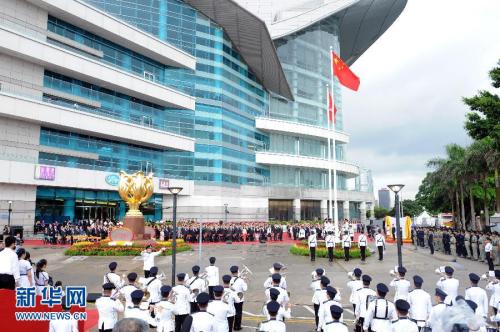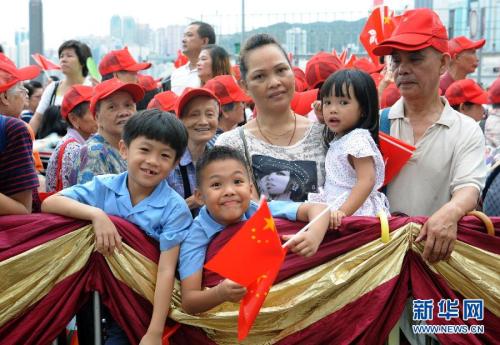香港回归中国以来的变化和永恒
It has been 17 years since Hong Kong returned to China’s administration. And to mark the anniversary, Hong Kong Executive Council Chief Executive Leung Chun-ying was joined by his predecessors,Tung Chee-hwa and Donald Tsang for a flag-raising ceremony in Golden Bauhinia Square.

HKSAR marks anniversary of return to China’s administration
Helicopters from the Government Flying Service whisked flags over the harbour. Fire service boats blasted water cannons in salute. And hundreds of ceremonies and carnivals were held across the city to mark the anniversary.
Speaking at a reception, Leung said that Hong Kong is working hard to forge a consensus on political reform.
"We understand different people have different opinions. This is normal in a society with free-speech like Hong Kong. Our government will take great efforts to implement universal suffrage for the Chief Executive (CE) election in 2017. It must comply with Hong Kong’s basic law, and the relevant interpretation and decisions of the Standing Committee of the National People’s Congress," Leung said.

HKSAR marks anniversary of return to China’s administration
In 1997, the Golden Bauhinia statue was erected to mark Hong Kong’s return to China. It remains a symbol of hope that the city will blossom into more prosperity. Seventeen years on, much has changed, but at the same time, it is not all out with the old.
From 1997 to 2013, Hong Kong’s GDP grew by 3.4 percent annually in real terms. In terms of purchasing power parity, Hong Kong’s GDP per capita ranks seventh in the world, according to the IMF.
What has stayed the same is that the city maintains its own system, and is vested with executive, legislative and independent judicial power. And the civil liberties of the people of Hong Kong remain largely intact.
For those joining the celebrations, whether old or young, they to show their backing for the government and the city’s prosperity.